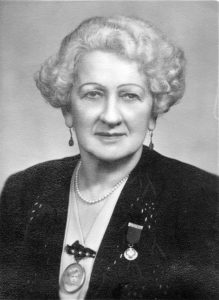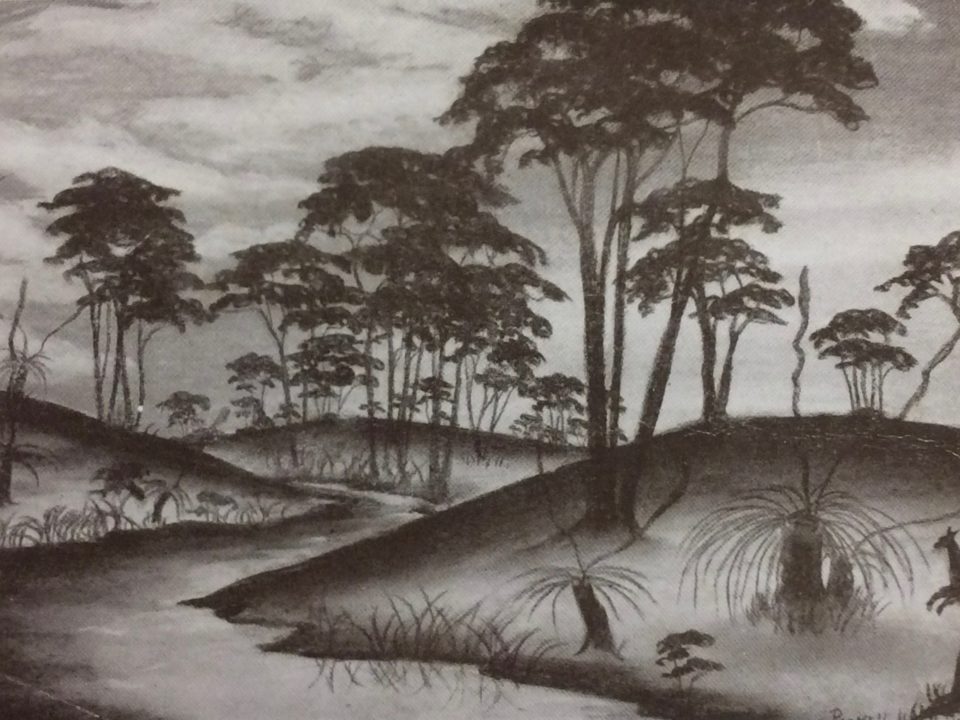Mrs Florence Rutter, a 71-year old Englishwoman, visited Carrolup twice—in July 1949 and January/February 1950. She returned to England soon after her second visit, having received permission from the West Australian government to exhibit and sell the Carrolup children’s artworks (mainly the boys’ drawings).

Mrs Florence Rutter. Noel & Lily White Collection.
A Trust Fund had been set up on behalf of the young artists—‘The Florence Rutter Trust Fund’—into which the money collected from sale of the children’s art would be placed. The Department of Native Affairs agreed to Mrs Rutter’s idea that the money would be used to support the boys’ art activities and help improve their living conditions.
In late 1950, Mrs Rutter published a 24-page booklet entitled Little Black Fingers [1], which provided an outline of the children’s story and her visits, and reproduction of some of the drawings. It contained six black and white prints, one colour print, and a page of small drawings of native weapons with accompanying print. Mrs Rutter also included the words of letters she had received from the boys, as well as a poem she had written.
The booklet served as both a catalogue and a means of furthering publicity whilst awaiting future exhibition dates. Here is how Florence finished the booklet:
‘What does the future hold for these Carrolup aboriginal children? Providing they can remain in the charge and care of Mr. and Mrs. White, to whom all the credit is due for their wonderful progress, and for their development (although not tuition) in art, they will soon become self-supporting, self-respecting and worthy citizens of their community. It has been proved that their pictures are eminently saleable. They are pictures that one can live with, be very proud to possess. It is therefore only a matter of bringing the pictures to the notice of the buyers. From my experience up to date I should say that the demand will always exceed the supply.
Thanks almost entirely to Mr. and Mrs. White’s great humanity and extraordinary skill in handling these youngsters they have a happier and brighter future. They can earn enough, not only to support themselves but to aid in the upbringing of their younger sisters and brothers. They can become teachers of their art, for the young ones are great copyists of anything the bigger boys are doing, like all children.
The story of Carrolup has been told up to date, a story I shall never cease to tell while life lasts. It’s a pathetic but also rather a beautiful story, showing love, skill, patience and perseverance on the part of the teachers; gratitude, love, work and perseverance on the part of their pupils. The gift they had, but only the happiness of finding some one who loved them and for the first time having a feeling of security, new hope was kindled in their hearts, and these pictures, in my humble opinion, have been an expression of their gratitude, expressed in Art.’
The Department of Native Affairs closed Carrolup school at the end of 1950, soon after Mrs Rutter’s booklet was published.
[1] Little Black Fingers refers to the children’s dirty fingers from using crayons and chalks for their drawings.


